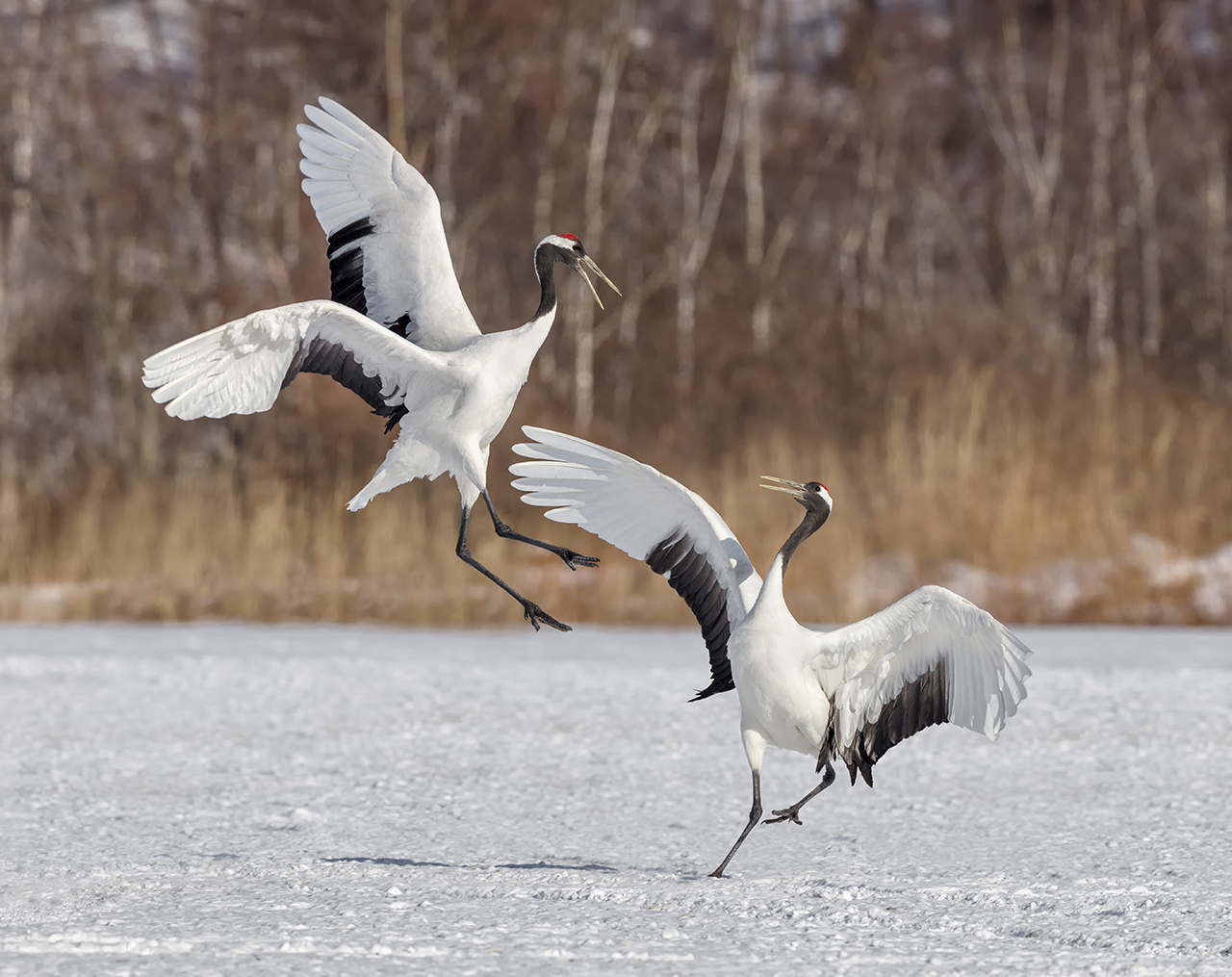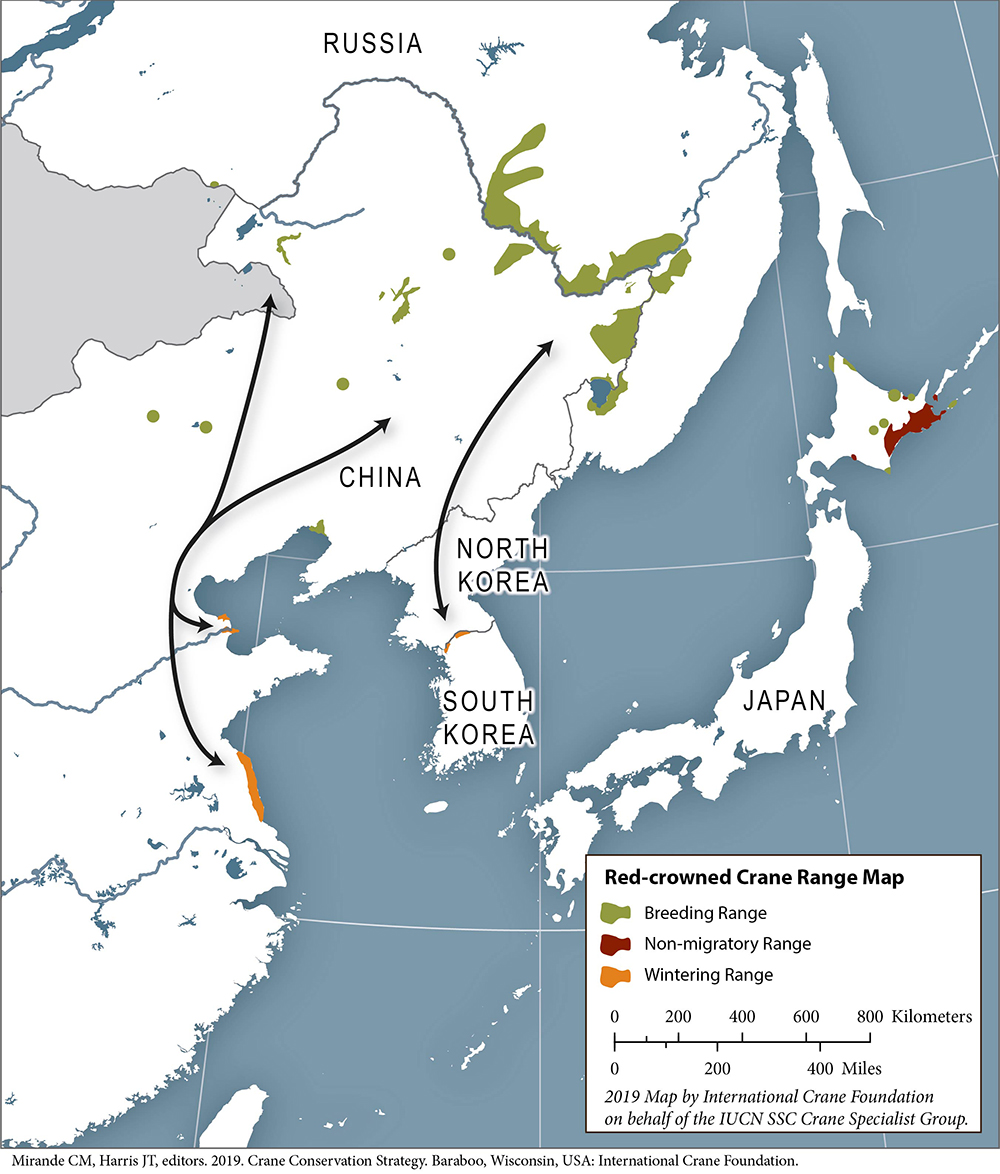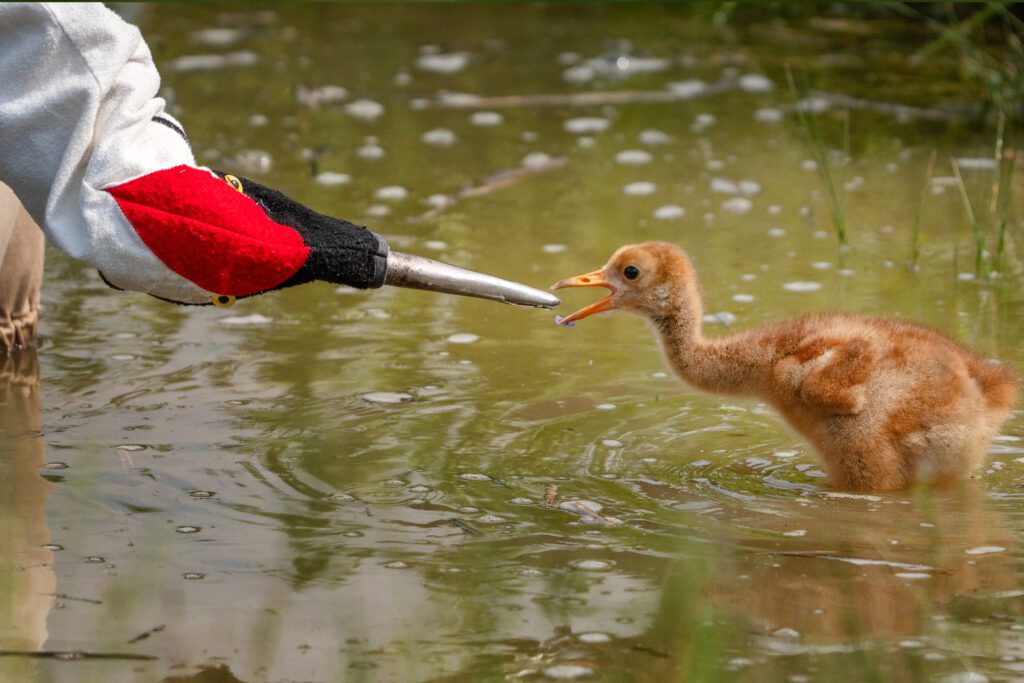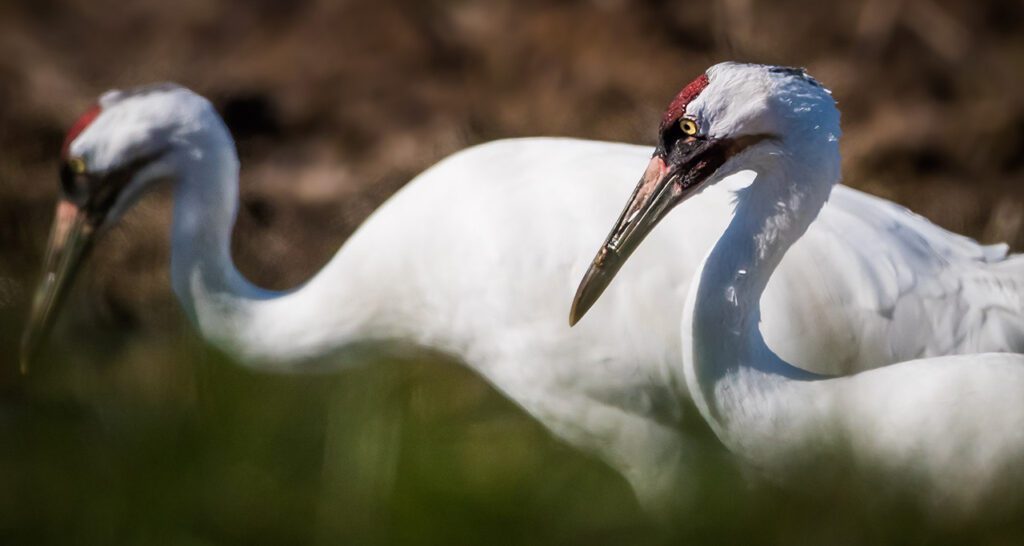Red-crowned Crane

SPECIES: Grus japonensis
HEIGHT: ~ 158 cm, 5 ft
WEIGHT: ~ 7.5 kg, 17 – 22 lbs
POPULATION: ~ 4,500
TREND: Increasing
STATUS: IUCN: VU; ESA: E; Cites Appendix I; CMS I, II
Photo by Ted Thousand
IDENTIFICATION
Adults – red patch on forehead, black band stretching from bill to front of the neck, white plumage, black feathers visible when wings extended; juveniles – a combination of white, cinnamon-brown and/or greyish plumage with a light tan head.
RANGE
Red-crowned Cranes breed in large wetlands in temperate East Asia. In the winter, the mainland population divides into two or three wintering subpopulations, wintering along rivers and in coastal and freshwater marshes in Japan, China and the Korean Peninsula. There are two main breeding populations: a migratory population on the East Asia mainland (northeastern China and Russia), and a resident population on the island of Hokkaido in northern Japan.

DIET
Insects, aquatic invertebrates, fish, amphibians, small mammals, reeds, grasses, heath berries, corn and waste grain. In Hokkaido, Japan, Red-crowned Cranes feed on human-provided corn, cereal grains and fish.
CALL
Listen to Red-crowned Crane calls:
Contact Call | A soft, purring call expressing reassurance and location.
Guard Call | A sharp, single call expressing alarm.
Unison Call | A duet performed by a pair, to strengthen their bond and protect their territory.
THREATS
Wetland habitat loss, illegal take and poisoning, water diversions, human disturbance, collisions with power lines, changes in agricultural practices, land development, pollution and environmental contamination, fires that destroy nests, invasive species, the risk of a disease outbreak at feeding stations, loss of habitat due to climate change.
OUR PLAN
Our work builds on the strong cultural ties to cranes in East Asia, to engage local communities and policy makers in the conservation of protected areas and their surrounding landscapes, including:
Ensure healthy populations of Red-crowned populations in the Amur-Heilong Basin of Russia and China. We are:
- Supporting the development and implementation of water management plans that sustain crane habitats and preserve wetlands for wildlife, flood control, enhancement of water quality, fisheries and other harvests important to people at Zhalong, Momoge, Xianghai, Tumuji, Muraviovka and other key crane wetlands.
- Developing pilot projects in China and Russia that demonstrate community involvement with wetland conservation.
Promoting cooperative research efforts between crane conservationists in Mongolia and the Amur-Heilong basin of Russia and China. - Conducting environmental education activities among communities and stakeholders affecting critical crane habitat to increase local and national pride and commitment to conservation action.
Securing wintering grounds for Red-crowned Cranes in and near the Demilitarized Zone of the Korean Peninsula. We are:
- Facilitating technical exchange, dialogue and collaboration with North and South Korean scientists and decision-makers.
- Restoring crane wintering areas in the Anbyon Plain of North Korea by assisting the local farming community in developing sustainable farming methods while providing food for cranes.
- Developing habitat management plans for the conservation of coastal wetlands in southwest North Korea.
- Supporting efforts within South Korea to protect Choelwon and other current wintering sites.
Learn more about Red-crowned Cranes:


